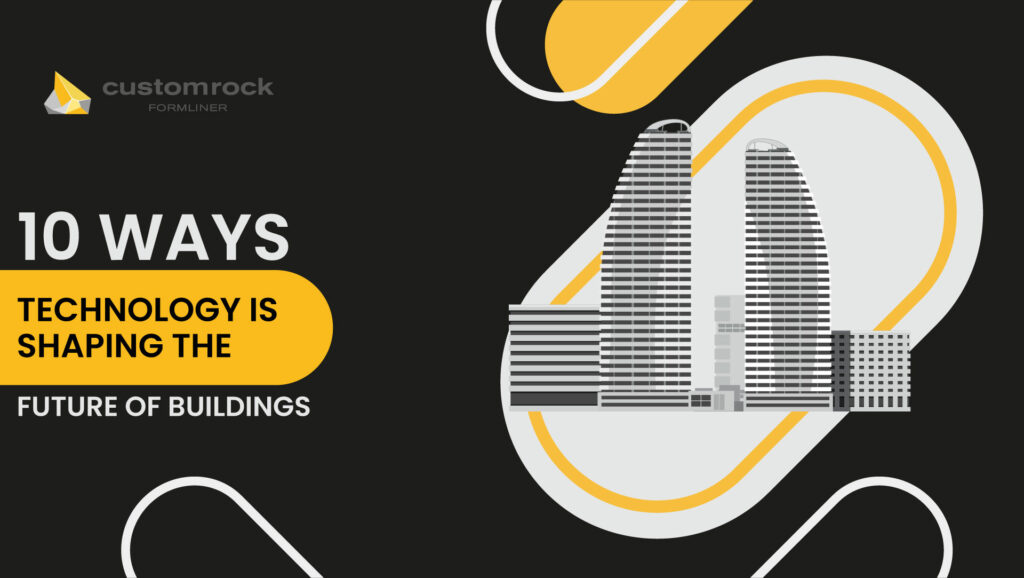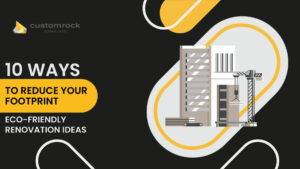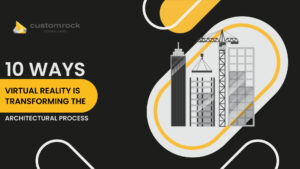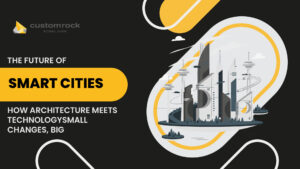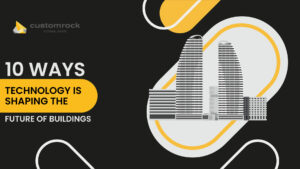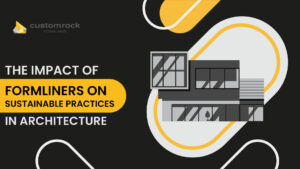TL, DR
There have been considerable changes in the progression of technology in the last few years, shifting the face of buildings. Intelligent infrastructure with IoT integration enhances comfort, productivity, and security by monitoring and adjusting the facilities’ infrastructure components such as HVAC and lighting systems in real-time.
Some of the green building materials that have the potential for use include self-healing concrete and fused translucent wood. BIM involves different places, participants, and activities within the life cycle of a building while 3D printing enables the efficient fabrication of products with intricate features using less material.
Augmented Reality (AR) and Virtual Reality (VR) enhance visualization and minimize mistakes in construction and energy efficiency applications such as advanced insulation and renewable energy systems. Automation of the construction toolbox and advanced robots improve layouts and reduce risks, while modular and Prefabrication constructions are fast and cost-effective with improved quality assurance.
For green building certifications, one can point out LEED and BREEAM that encourage sustainable practices; on the other hand, proactive management and optimization of a building’s usage can be defined through digital twins, which are essentially replicas of physical buildings.
The ten technologies are described together from the perspective of building a future where they become smarter, environment-friendly, and suitable for occupants. With time, technological advancement will bring in more improvements that will lead to an enhanced fully connected, and sustainable built environment.
10 Ways Technology is Shaping the Future of Buildings
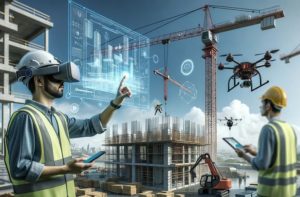
The construction industry’s contemporary and futuristic trends align with technological innovation. These innovations can redefine even the basic elements of the shelters we live in, equivalent to the shelter of a tree a little above the ground, to how these shelters are created and used, everywhere involving us citizens.
The necessity of creating more space through vertical constructions and other demands of growing metropolitan societies are met by technological solutions when it comes to smart and efficient buildings.
Whether it is about sophisticated applications that improve the quality of our homes and offices or sustainable materials that decrease our negative impact on the environment, technology is leading to the emergence of a new paradigm in architecture and construction. Here are ten ways technology is shaping the future of buildings:
1. Smart Buildings
Smart buildings integrate things through IoT to take control of spaces that can improve comfort, productivity, or security levels.
Computerized and wired systems can provide real-time information that can be used to manage a building’s heating and ventilation, air conditioning, lighting, security, and many others.
For instance, smart thermostats gradually identify occupants’ patterns and regulate temperatures in ways that suit them and are efficient in energy use.
2. Sustainable Construction Materials
There has been progress in the use of construction materials as modern science is innovating ways to produce and use green materials. These materials are generally stronger, use less energy, and have less or no effect on the texture of the surface they are used on as compared to other materials.
Two of them are self-healing concrete which can close any cracks on its own, and translucent wood which can be traversed by light and is hardy at the same time. These innovations make a positive impact on how buildings are done and also bring down the amount of carbon that projects produce.
3. Building Information Modeling (BIM)
BIM is short for Building Information Modeling and is a process of creating an electronic model of a building that represents the physical as well as the functional aspects of the structure. It simplifies the sharing of information across an architect, engineer, and construction professional during the making and finalization of a building.
It allows us to visualize information, coordinate work, and make decisions easily, all thanks to the use of BIM. It is also effective in checking areas of conflict before developing construction, which eventually helps in avoiding various expensive changes during the construction period.
4. 3D Printing
3D printing or additive manufacturing is gradually penetrating the construction market. It makes it possible to develop, with high levels of precision and at high rates of construction, building components, and even overall buildings.
It is cost-effective, resource-efficient, and allows for the incorporation of groundbreaking materials in construction. Currently, it is used in the building of low-cost homes, disaster relief housing, and other customized architectural designs and components.
5. Augmented Reality (AR) and Virtual Reality (VR)
AR and VR are reshaping the perception as well as communication of architectural projects for architects as well as builders.
With the use of VR, stakeholders are capable of having a perception of a building project before it is developed through a visual representation of the model of the building to be constructed.
AR adds computed data on the real environment and proved helpful in construction by accurately displaying the placement of beams and pipes. Such technologies form a part of masterful communication to minimize errors while achieving the best results for the projects in question.
6. Energy Efficiency Technologies
One of the defining features in contemporary architectural planning about constructed structures is energy efficiency. The transition to features like high-performance insulation, energy-efficient windows, smart lighting, and many others contributes to the reduction of energy use.
Today, it is possible to design buildings with renewable energy systems such as solar PV panels and wind turbines, and even become net zero energy. Energy storage products, including batteries, facilitate the storing of energy for later use within the buildings.
7. Robotics and Automation
Robots and automated beings are becoming seminal in the construction sector. Some of the benefits of using robots include when performing a task that is delicate, hazardous, or involves unnecessary repetitive exercises. For example, robotic means can be utilized effectively in bricklaying because they do not get tired and work at a rapid pace compared to human beings.
Specifically, drones are employed to take photographs and videos of the site for surveys, inspections before and during construction, and progress monitoring using data gathered in real-time as opposed to relying greatly on human effort.
Another advantage of automation is that it overrides dangerous operations since they can always be managed by people.
8. Modular Construction Techniques
Another way in which technology has evolved the overall future of buildings is the introduction of the concept of modular construction making construction work more efficient and effective than ever before.
Modular construction is a technique of building different parts of a building offsite in a factory and then all the final parts are transported to the site and assembled there.
This method has effectively reduced the overall work hours, cost, and waste by efficient measures and early detection of mistakes and by reducing extensive repair and reconstruction costs. The technique has made personalization and customization possible to all extents.
9. Green Building Certifications
Certificates like Leadership in Energy and Environmental Design highlight environmental responsibility and are particularly important in promoting the use of sustainable infrastructure.
LEED and BREEAM are special certifications that guide how to design, build and manage facilities and structures with the idea of low impact on the environment.
They support the utilization of efficient climate control, eco-friendly construction materials and components as well as environment-friendly methods in the management of waste that is likely to improve the standards of living and working.
10. Digital Twins
A digital twin is a simulation of a physical structure that is as vibrant as its real-life counterpart and is validated periodically through sensor-based inputs. Utilizing this technology, the management of buildings can track the efficiency, foresee when the building will require fixing, and organize its functioning.
It means that with the help of digital twins, only necessary scenarios can be simulated and controlled in advance: say energy consumption or emergencies. These result in better efficiency, understood costs, and increased occupant comfort.
Conclusion
The integration of these technologies is bringing a shift in the design and management of building structures. To streamline the process, technology is crossing over in every phase of the building’s life cycle- from design to demolition.
Industry 4.0, big data analytics, innovative structures, intelligent facilities, eco-friendly products, integrated digital environment, sustainable construction methods, sustainability standards, and virtual reality are simultaneously defining the new development. These developments not only hold the potential to enhance the capacity and appearance of constructions and structures but also to conventionalize sustainable buildings that meet the demands of their users.

